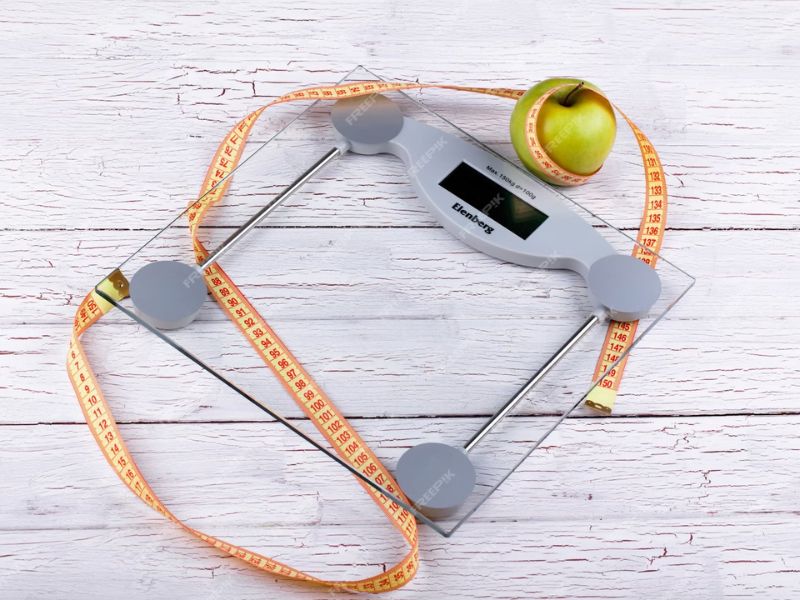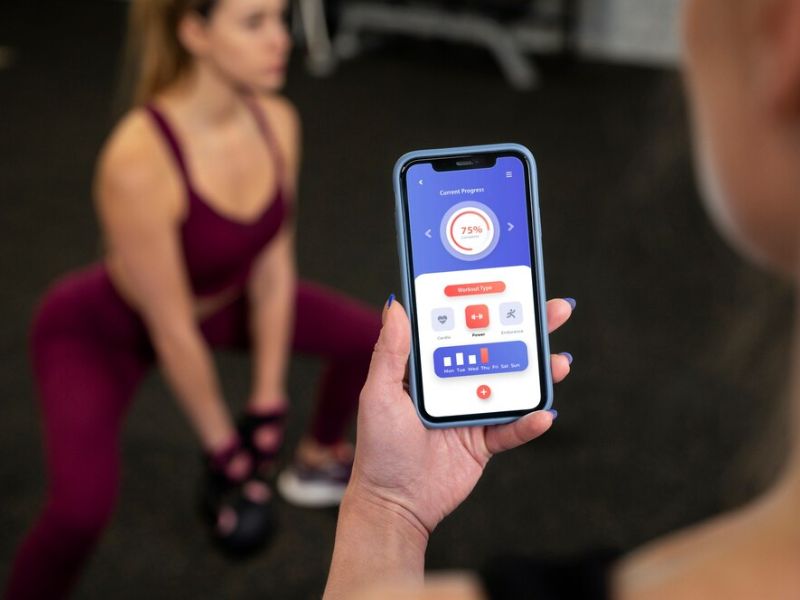Tracking your progress is a key part of reaching your muscle and fat loss goals. It’s like keeping tabs on how well you’re doing in your journey to get stronger and leaner.
By setting clear goals and regularly checking in on your progress, you can stay on track and make adjustments as needed.
Think of it as a roadmap to success, helping you navigate your fitness journey and reach your desired destination.
Whether it’s monitoring your weight, measuring your body, or keeping track of your workouts and nutrition for muscle and fat Loss, tracking progress gives you valuable insights into what’s working and what may need tweaking.
So, let’s dive in and explore how to effectively track your progress and achieve those muscle and fat loss goals!
Best Metrics for Tracking Progress

Here’s a breakdown of the key metrics at your disposal:
- Weight: This is the go-to metric for many people when it comes to tracking progress. Stepping on the scale provides a quick snapshot of your overall weight changes.
- Body Measurements: Taking measurements of various body parts, such as your waist, hips, chest, arms, and thighs, offers a more comprehensive view of your progress. While the scale may not budge, changes in body measurements can indicate shifts in body composition, such as fat loss and muscle gain.
However, it's important to remember that weight alone doesn't tell the full story. It can fluctuate due to factors like water retention or muscle gain, which may not necessarily reflect fat loss.
Tools and Techniques for Tracking Muscle and Fat Loss Progress
Let’s explore some of the most popular options and how they can support your fitness goals.
A. Tracking Tools and Techniques

- Fitness Trackers & Apps: These handy devices are like mini gyms on your wrist. There are many syncs with scales, allowing you to track weight, log workouts (sets, reps, exercises), and even capture progress photos – all in one place!
- The Old-Fashioned Method: Don’t underestimate the power of simplicity. A trusty notebook can be your progress journal. Jot down your weight, measurements, exercises performed, and even how you feel after each workout session.
- Progress Photos: A picture is worth a thousand words, especially when it comes to tracking progress. Take regular progress photos from different angles (front, back, side) to visually document your transformation.
b. Selecting the Right Tool

The best tool for you depends on your preferences and lifestyle. Here are some factors to consider:
- Tech Savvy: Do you love gadgets and apps, or prefer a more low-tech approach?
- Accessibility: Consider what tools are readily available and fit your budget.
- Usability: Choose a method you’ll consistently use and find easy to maintain.
For example: If you’re constantly on the go, a fitness tracker might be ideal. If you prefer a more personal touch, a pen and paper journal could be perfect.
Frequency of Tracking Progress

A. Tracking Frequency: Friend or Foe?
Tracking progress can be a powerful tool, but the frequency matters. Here’s why:
- Too Frequent Tracking: Daily weigh-ins can be demotivating due to natural weight fluctuations (water retention, food intake). It’s like checking the stock market every minute – the constant ups and downs can be stressful!
- Too Infrequent Tracking: Completely forgetting to track can make it hard to see progress and adjust your plan if needed. It’s like navigating a maze blindfolded – you might wander in circles!
B. The Tracking Goldilocks Zone:
While there is no one-size-fits-all approach to tracking progress, aiming for a balance between consistency and flexibility is key.
Here are some general guidelines to consider:
- Weekly Check-Ins: For most individuals, tracking progress on a weekly basis is a good starting point. This frequency allows you to monitor changes over time without becoming overly fixated on daily fluctuations.
- Monthly Assessments: In addition to weekly check-ins, consider conducting more comprehensive assessments on a monthly basis. This allows you to evaluate long-term trends and make adjustments to your fitness plan as needed.
C. Individuality is Key: Factors to Consider
The optimal tracking frequency can vary depending on you! Here are some factors to consider:
- Goal Timeline: Are you aiming for quick results or a more gradual transformation? More frequent tracking might be helpful for short-term goals, while less frequent tracking can work well for long-term plans.
- Individual Variability: Some people respond quickly to changes in diet and exercise, while others see progress more slowly. Experiment and find a frequency that keeps you motivated and reflects your progress accurately.
Signs of Progress in Muscle and Fat Loss Journey
Tangible and Intangible Signs of Progress
Tangible Signs: These are the changes you can see and measure, such as:

- Decreased waist circumference or clothing size
- Increased muscle tone and definition
- Lower body fat percentage as measured by calipers or bioelectrical impedance analysis
Intangible Signs: These are the less quantifiable but equally important changes that reflect improvements in overall well-being, such as:

- Enhanced energy levels and stamina throughout the day
- Improved mood and mental clarity
- Better sleep quality and recovery
Common Mistakes to Avoid in Tracking Progress

A. Tracking Traps: Common Errors and Misconceptions
Let’s face it, tracking progress isn’t always sunshine and rainbows. Here are some common mistakes to watch out for:
- Obsessing Over the Scale: Daily weigh-ins can be discouraging due to natural fluctuations in weight (water retention, food intake). Remember, the scale is just one piece of the puzzle. Focus on long-term trends and celebrate gradual changes.
- Comparing Yourself to Others: Everyone progresses at their own pace. Social media can be a highlight reel, showcasing “perfect” physiques. Don’t get discouraged! Focus on your own journey and celebrate your personal achievements.
- Inaccurate Measurements: Ensure consistent measurement techniques (time of day, clothing) for reliable comparisons. Taking measurements after a big meal or with bulky clothes on can skew the results.
B. Avoiding the Pitfalls: Keeping Your Tracking Accurate
By being aware of these common mistakes, you can ensure your tracking is accurate and reflects your true progress. Here are some tips:
- Focus on Trends, Not Daily Numbers: Track your weight or measurements weekly or bi-weekly to see the overall trend. Don’t get discouraged by daily fluctuations.
- Celebrate Non-Scale Victories: Did you lift heavier weights or finally master that new exercise? These are fantastic signs of progress! Celebrate these achievements alongside the numbers on the scale.
- Maintain Consistent Techniques: When taking measurements, wear similar clothing and measure at the same time of day (ideally before meals) to ensure accuracy.
C. Staying the Course: Practical Tips for Overcoming Tracking Mistakes

So, you’ve fallen into a tracking trap? Don’t worry, everyone makes mistakes! Here’s how to get back on track:
- Revisit Your Goals: Remind yourself of your “why” – what are you working towards? Refocusing on your goals can reignite motivation and keep you on track. [*]
- Adjust Your Tracking Approach: Maybe daily weigh-ins aren’t working for you. Try a less frequent approach or incorporate progress photos to see the visual changes.
- Seek Support: Don’t be afraid to ask a friend, trainer, or online community for support. Talking to others can help you overcome tracking challenges and stay motivated.
Conclusion
As we reach the end of our journey, take a moment to reflect on the insights and recommendations shared in this guide.
Armed with the knowledge and tools to track your progress effectively, there’s nothing standing in your way.
So go forth with confidence, dear reader, and remember—consistency is the key to unlocking the door to success.


2 thoughts on “How to Track Progress for Muscle and Fat Loss Goals ”